Info
Subfamily: Panicoideae
Genus etymology: Panicum = "belonging to bread" [Latin] refering to use by several species as cereal grains
Species etymology: coloratum = "color possessing" [Latin] refering to its unusual coloration, likely the blue coloration of its leaves
Photosynthetic type: C4 (warm season)
Nativity: naturalized - intentional
First recorded in Hawaiʻi: 1939
Map
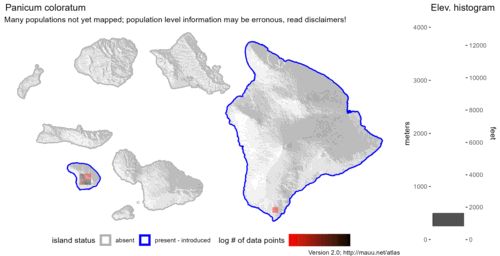
Inflorescence
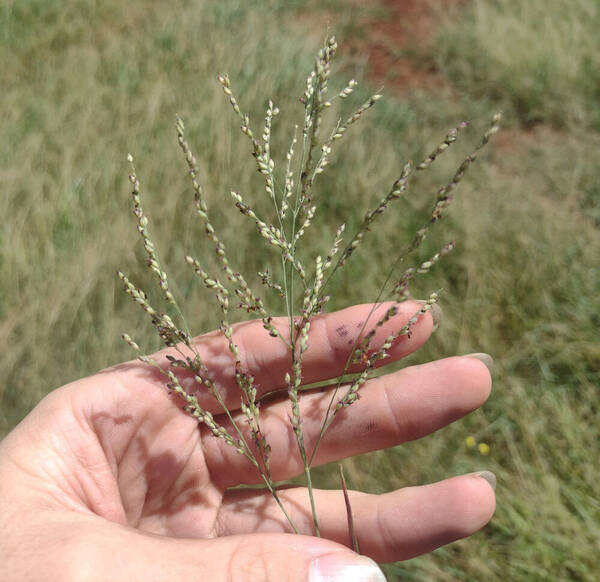
Plant
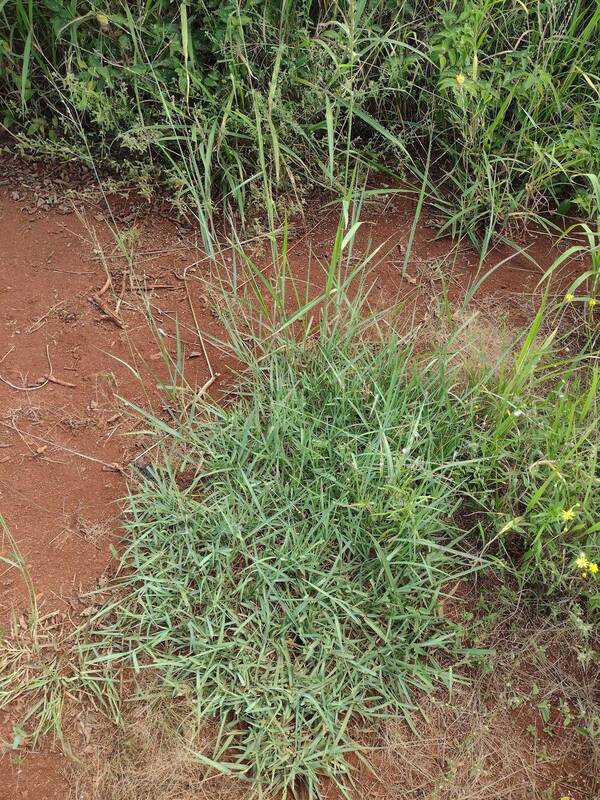
Habit
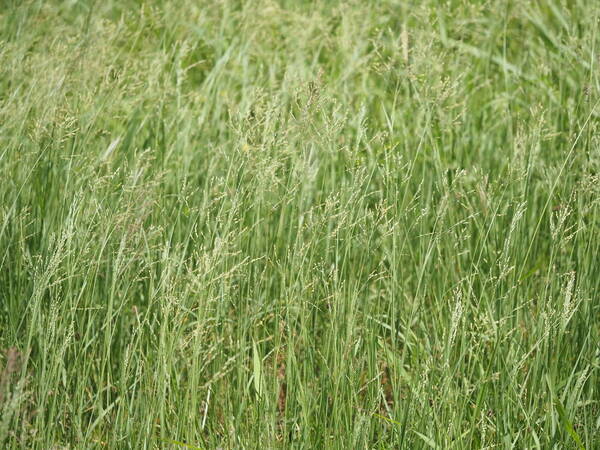
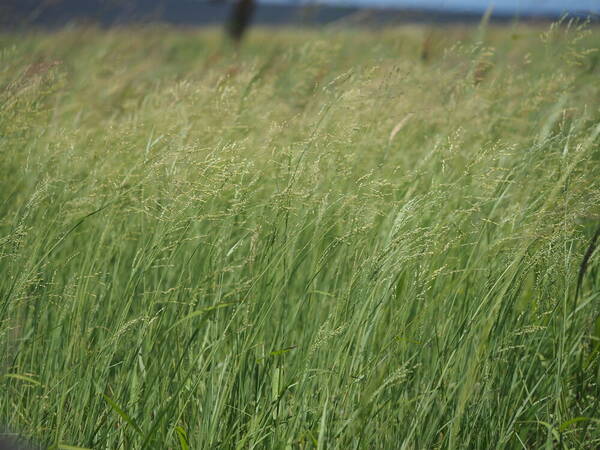
Spikelets

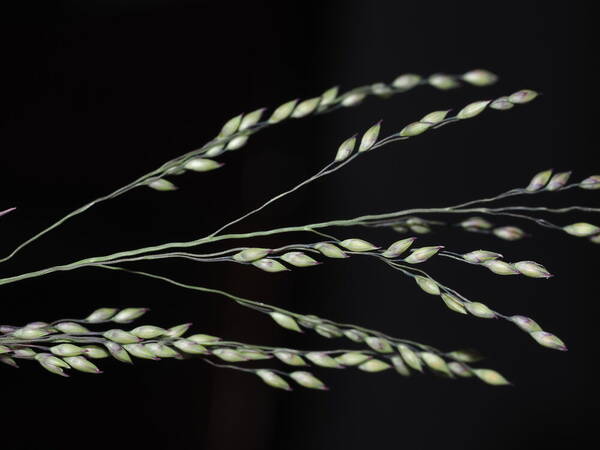
Culm base
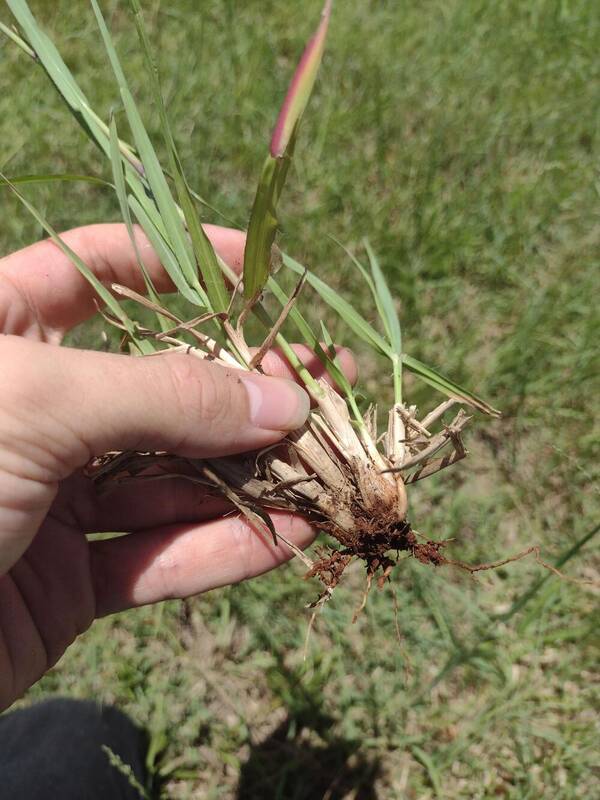
Description
Tufted perennial, pubescent or subglabrous, the base usually knotty or slightly swollen, often with persistent scales; culms usually erect, 15–100 cm. high or more, rarely the culms decumbent; nodes glabrous, rarely hairy. Leaf-sheaths glabrous, pilose or with stiff tubercle-based hairs; blades linear, (3–)12–30 cm. long, (2–)5–10(–12) mm. wide, straight to almost amplexicaul at the base, flat, glabrous or hairy, acute or acuminate, Panicle ovate, 4–30(–40 in glaucous forms) cm. long, usually much branched, contracted or spreading, the branches ascending and naked at the base with the spikelets evenly dispersed, rarely little branched and the spikelets clustered. Spikelets ovate-elliptic, 2–3 mm. long, green, often tinged with purple, obtuse, acute or occasionally acuminate; lower glume ovate, 1/4–1/3 the length of the spikelet, membranous, 1(–3)-nerved, cuff-like, clasping, acute; upper glume broadly ovate, as long as the spikelet, 7–9-nerved, acute; lower lemma similar to the upper glume, ♂, its palea well developed; upper lemma pale and glossy.
(Description source: Clayton, W.D. & Renvoize, S.A. 1982. Flora of Tropical East Africa. Gramineae (Part 3). A.A. Balkema, Rotterdam. 448 pp. )
Tufted, pubescent or subglabrous perennial, the base usually knotty or slightly swollen, often with persistent scales; stems erect, up to 200 cm high, sometimes more, rarely decumbent; leaves linear, 3–30 cm x 2–12 mm, straight or subamplexicaul at the base, flat, glabrous or hairy, acute or acuminate. Panicle ovate, 4–30 cm long, usually much-branched, contracted or spreading, the branches ascending. Spikelets ovate-elliptic, 2–3 mm long, green, often tinged with purple, obtuse, acute or occasionally acuminate; lower glume ovate, 1/4–1/3 the length of the spikelet, 1(–3)-nerved, cuff-like, clasping, acute; upper lemma pallid, smooth and glossy.
(Description source: Cope, T.A, (1995) Flora Somalia, Vol 4. Royal Botanical Gardens, Kew, London. 312 pp. )
Tufted perennial with erect or ascending culms 50–100 cm. high. Leaf laminae 7–20(30) cm. long and 3–10 mm. wide, linear, flat, acute or acuminate. Panicle 10–26(40) cm. long, ovate, moderately to much branched, contracted or spreading, the spikelets somewhat clustered or evenly dispersed. Spikelets 2–3 mm. long, ovate-elliptic or ovate; inferior glume 1/4–1/3 the length of the spikelet, 1–3-nerved, broadly ovate, cuff-like; superior glume 7–9-nerved; inferior lemma similar to the superior glume, male, its palea well developed; superior lemma and palea pallid, shiny.
(Description source: Launert, E. & Pope, G.V. (eds.). 1989. Flora Zambesiaca. Volume 10. Part 3. Kew, London. 152 pp. )
Plants perennial; cespitose, usu¬ally with short, knotty rhizomes. Culms 50-140 cm tall, 1.5-2.5 mm thick, usually erect, rarely decumbent, firm; nodes glabrous or puberulent; internodes glabrous. Sheaths shorter than the internodes, glabrous or hispid, hairs papillose-based, rounded basally; ligules 0.5-2 mm; blades 10-30 cm long, 2-8 mm wide, flat, glabrous or sparsely hirsute on 1 or both surfaces. Panicles 4-25(40) cm long, 3-14 cm wide, exerted, lax; primary branches 3-14 cm, opposite and alternate, ascending, glabrous, branching in the distal M; pedicels 1-4 mm, appressed or spreading. Spikelets 2.5-3.5 mm long, 1-1.2 mm wide, narrowly ovoid to ellipsoid, glabrous, acute. Lower glumes 1-1.5 mm, about 1/3 as long as the spikelets, glabrous, 1-3-veined, acute; upper glumes slightly exceeding the lower lemmas, glabrous, acute, scarcely separated from the lower lemmas; lower florets staminate; lower lemmas similar to the upper glumes; lower paleas 2-3 mm, oblong; upper florets 2-2.5 mm long, 0.8-1 mm wide, ellipsoid, widest below the middle, glabrous, smooth, shiny, apices lightly beaked. 2n = 18, 36, 41, 42, 43, 45, 54, 63 (United States material apparently usually tetraploid, with 2n = 36).
(Description source: Barkworth, M.E., Capels, K.M., Long, S. & Piep, M.B. (eds.) 2003. Flora of North America, north of Mexico. Volume 25. Magnoliophyta: Commelinidae (in part): Poaceae, Part 2. Oxford University Press, New York. 783 pp http://floranorthamerica.org/Panicum_coloratum )
Cespitose, erect perennials 50-100 cm tall. Ligule a ciliate membrane, ca. 1.5 mm long; blades 10-30 cm long, 0.4-1 cm wide, glabrous. Panicles 4-30 cm long; spikelets 2.5-3.5 mm long, ovoid, acute, glabrous; first glume 1-1.5 mm long, 1/4-1/3 as long as spikelet, 1-3-nerved, acute, clasping, second glume 7-nerved; first floret staminate, first lemma 7-nerved, first palea as long as first lemma; second floret 1.8-2.2 mm long, acute, glossy, smooth; anthers 1.2-1.6 mm long. [2n = 18, 32, 36, 44, 45, 49, 54, 63.]
(Description source: O’Connor, P.J. 1990. Poaceae, pp. 1481–1604. In: Wagner W.L., Herbst D.R. & Sohmer S.H. (eds.)., Manual of the flowering plant of Hawaiʻi. Vol. 2. University of Hawaii Press & Bishop Museum Press, Honolulu )